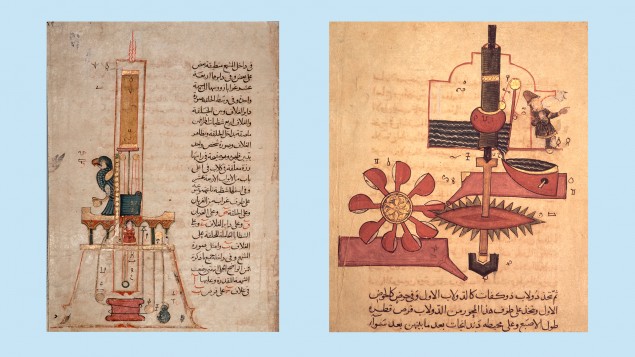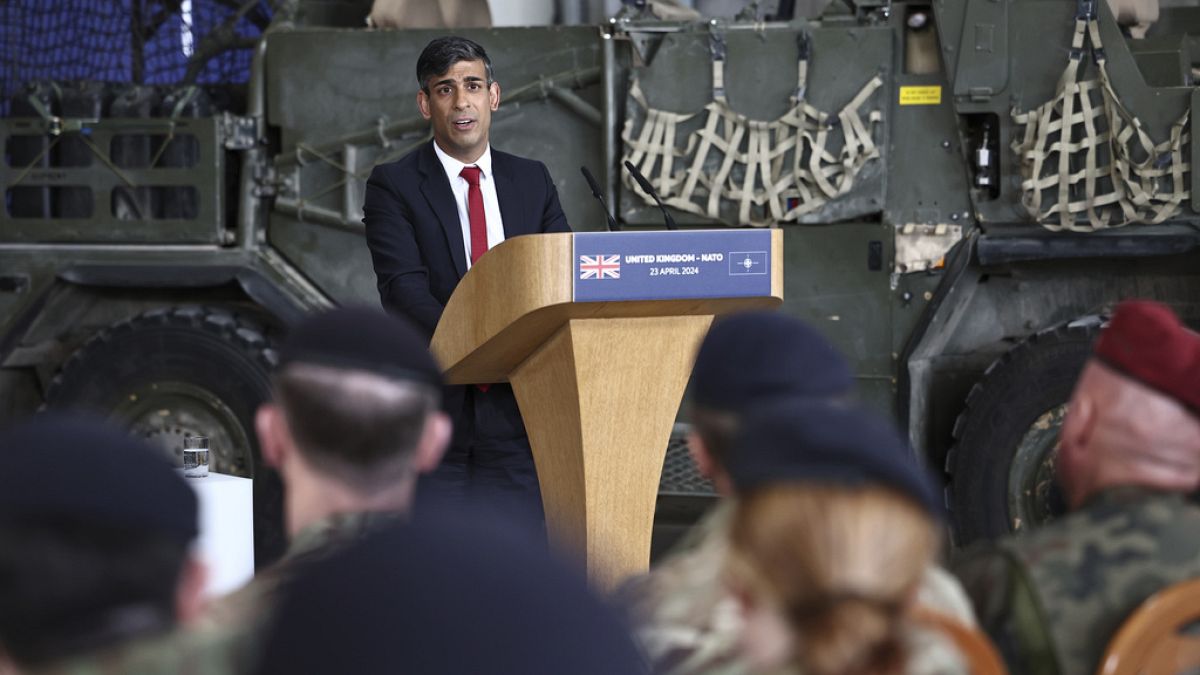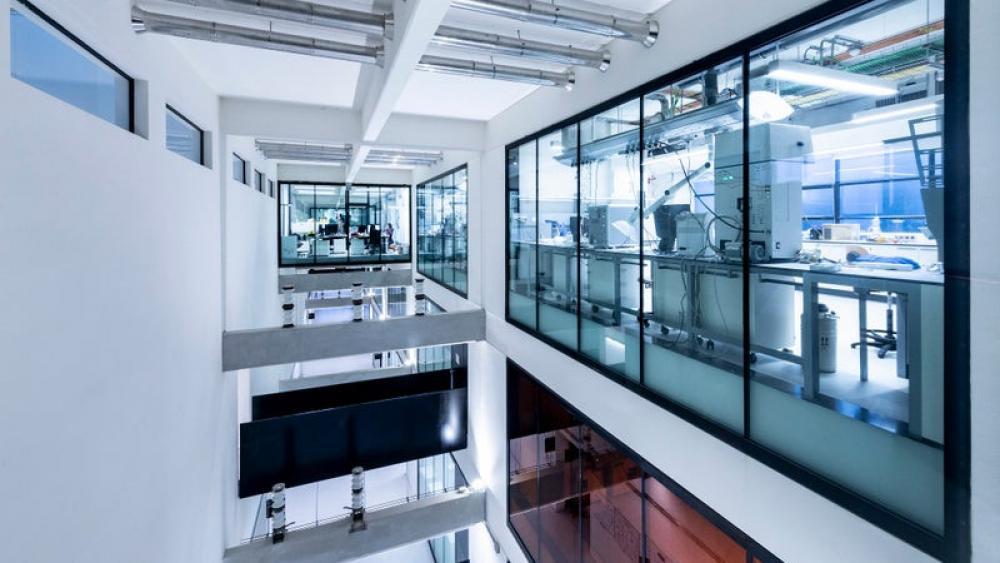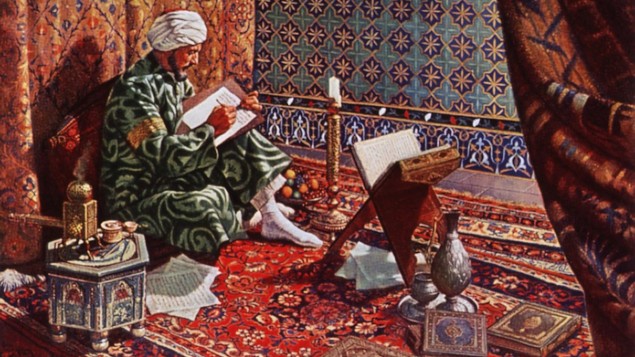- On the study of paramedics: the Persian scholar Avicenna was considered a medical and philosophical reference until the sixteenth century. (Image Alliance/The Everett Group)
Mathematics, Astronomy and Medicine – When the Christian West was in the Middle Ages, science flourished in the Islamic world. The discoveries of Muslim scholars soon inspired the Renaissance.
Chemistry, algorithm, algebra, number, tariff, alcohol, elixir. These are just a few of the Arabic words that have found their way into our everyday language. They refer to a time when the bastions of knowledge production were in the Islamic world. Research and education about this era Iranian and Islamic scholar Eva Ortman From Georg-August-Universität Göttingen:
“The flourishing of science is mainly related to the promotion and sponsorship of science. The beginning of the growing interest is related to the Abbasid period, the second dynasty of Islamic rule that began in the middle of the eighth century and during this period in particular of the Abbasid era. At the beginning of the ninth century, people began to pay more attention to the existing knowledge in the Islamic world.”
house of wisdom
The House of Wisdom in Baghdad is considered a popular science as a center of learning during the heyday of Islam that was promoted. A term that Eva Ortmann uses only hesitantly: “Blossom”, yes – you can certainly talk about a bloom in the early Abbasid period, but you also have to be a little careful because of the differentiation of the Islamic world into very individual regions. Important scientific advances have been made at very different times.”
The Islamwissenschaftlerin Sonja Brentjes From the Max Planck Institute for the History of Science in Berlin agrees: “If one defines ‘blooming’ with positive results, with beauty, with success, then Islam in principle flourishes in various forms until confrontation with colonialism takes place in different regions.”
Eva Orthmann refers to the Iranian region of the thirteenth century, where the important astronomer Nasir al-Tin al-Tusi worked, or the Indian region of the Mughal period of the sixteenth century, where medicine and astronomy flourished. Sonja Brentjes points out that our understanding of flowers has to do with the possibility of measurement: the presence of scientific writing, invention, or artefacts. Mysterious sciences such as alchemy or magic are difficult to recognize as knowledge today. At that time, world-class scientists also conducted research in these areas.
Friendly characters, rotating bodies
For example Thabit ibn Qurra known in Europe as Thebit. Born in Harran in 826 and died in Baghdad in 901. Mathematician, astronomer, astrologer, magician, physicist, medic and philosopher. “He was apparently a money-changer, and since he was a Serapian, he must have known something about stars, planets, and astral knowledge,” explains Brentjes.
Sonia Prentice especially appreciates Ben Karat’s constant for what she says “beautiful mathematics”: dealing with the theory of so-called “friendly numbers” or calculating the content of rotating solids. He wrote a book, translated into Latin, which was used as a textbook on mechanics in medieval Europe. Of course, Ibn Qurra is not the only encyclopedist.
Ibn Said, known in the Western world under the Latin name Avicenna, is one of them. He was born shortly before 980 in Bukhara in what is now Uzbekistan, and died in 1037 in Hamadan in western Iran. Physician, scientist, philosopher, poet, lawyer, mathematician, astronomer, alchemist, music theorist, and politician. He writes his works in Arabic and Persian.
Multicultural Avicenna
“Perhaps in Avicenna there are two regions that deserve special mention,” says Eva Ortmann. “He is a very important figure in philosophy, but he also wrote medical literature. This includes, for example, Alkhanun, The Canon of Medicine, a book which was then translated into Latin and also in our medical training to the best of my knowledge, it played a part in the century seventeenth and is a highly structured view of medicine.”
Avicenna is known from the novel “The Medicus” which describes his work in a fictional form. The Institution of Islamic Study located in Osnabrück is also named after the Cosmopolitan World. But in general, little is known in this country about the different times, places and personalities of learning in the Islamic world.

Eva Ortmann and Sonya Prentjes regret that they still encounter stereotypes. Many scholars were Muslims–but that was of little importance to their scientific research, Ortmann: “Let’s put it this way: the fact that people are Muslims doesn’t really play such a central role in their activities.”
Centuries to come Europe
However, there are areas of Islamic religious practice in which mathematical or astronomical research is used, as Sonya Prentjes says: “Three things can be solved mathematically or worked on, namely: When are the individual prayer times, during the day and at night? When is it done? And the second: How do I find Where – where is Mecca, and in what direction should I pray?You can also make machines for this, and there are compasses also called “prayer compass”.
However, scholars from this intermarriage of Islamic scholars develop systematic methods of experimentation and observation that are only used in Europe centuries later. They write commentaries on translations from other languages and, like Al Biruni scholar, direct their interest in knowledge to India. Others use their knowledge of new inventions.
Rediscover a wealth of knowledge
For example, Al-Jazari, probably from the northern part of Mesopotamia, lived at the turn of the twelfth and thirteenth centuries and was in the service of the Turkmen dynasty of the Ortocians. Ortmann calls him “an inventor and engineer belonging to the thirteenth century, who made a number of mechanical inventions, for example clocks. He is known for his automatic watches and machines. He made accurate, technically fun and fantastically designed water clocks. Perhaps the most famous of these is his elephant clock, but he developed after This includes certain devices for pumping water from the depths and improving irrigation technology.”
Interest in the wealth of knowledge from the Islamic world first awakened in Europe in the early modern era, Prentiges says: “The fact that there are so many Arabic, Persian, and Turkish manuscripts in Europe today has to do with this attempt to create texts so there are very, very, very great efforts by all the courts in the sixteenth and seventeenth centuries to obtain such texts. ”
With the Renaissance, there is again more production of knowledge in Europe – a development that would not have been possible without the preservation and further development of the Islamic world. This knowledge transfer is still little appreciated in this country.

“Alcohol buff. Troublemaker. Introvert. Student. Social media lover. Web ninja. Bacon fan. Reader.”








More Stories
Newly appointed Science, Research and Innovation Council
Asparagus with Salmon and Avocado: A slightly different asparagus dish
Intelligence and Alzheimer's disease: How fit is your brain? Your eyes guide her